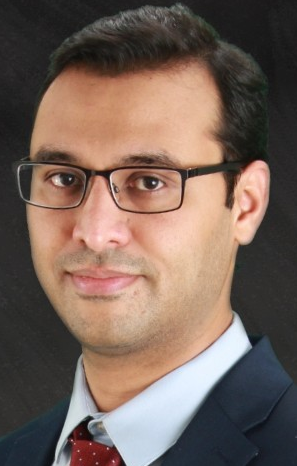Agenda |
|
8:00 - 9:00 am
Welcome Coffee and Registration
9:00 - 10:00 am
Understanding the Impacts of Real-time Isolation and Empowering its Execution
Recent international conflicts and cybersecurity events have pushed utilities to bolster their response plans including procedures for isolating critical real-time systems. Confidence is critical during a cyber event. Teams must be confident in their actions, in their support, and in their responsibilities for continued operations. Newly mandated cybersecurity requirements for real-time systems, including recent TSA directives, have included language around developing isolation procedures and governance. This session will showcase how Exelon is going a step beyond defining the architecture, impacted systems, and needed steps for isolating real-time systems. IT, Cybersecurity, and Business leads across Exelon's utilities are working together to map out the downstream processes, and day-to-day operations that will be impacted during an isolation event in order to better plan and raise confidence in their team's response.
Key Takeaways: How to take proactive cybersecurity measures to protect utility real-time systems
Why documentation and socialization of IT and business impacts of real-time isolation is important
Which isolation governance procedures are needed to empower the proper stakeholders to make critical decisions around isolation




10:00 - 10:30 am
How to Survive a Penetration Test of an OT Network
Penetration tests provide an organization valuable insight into vulnerability exposure as well as a metric to quantify risk for an organization; however, penetration testing actions themselves can pose risk to even a mature network. Denial of service conditions can occur when basic systems get taken offline due to testing, such as phones not working, printers failing, and network outages, all due to standard penetration testing methods. Many Operational Technology (OT) networks running critical industrial control infrastructure never undergo a penetration test for fear of causing these types of service outages. Take the plunge, learn how to safely traverse the penetration testing process and understand the vulnerabilities and consequent risk associated with an OT network running critical infrastructure. Hear firsthand experiences of complete OT network penetration tests including initial scoping, establishing rules of engagement, active testing of OT infrastructure, reporting and more.
Josh Schmidt, Director - Cyber Security Assessment Services, BPM
Ryan Ferran, SCADA Penetration Test Team Lead, BPM
10:30 - 11:00 am
Networking Coffee Break
11:00 - 11:30 am
Five Steps Utilities Can Take to Defend Against Evolving Cyberthreats
Utilities and other critical infrastructure operators are juicy targets for various cyber attackers, from hostile nation-states and their proxies to organized cybercrime gangs to malicious insiders. It's a full-time job to keep up with their evolving tactics to steal sensitive data, lock up critical systems for ransom, or just wreak general havoc for geopolitical ends. This session will examine the evolving cyberthreat landscape for utilities and explore the five proactive steps you can take to mitigate the impact of successful attacks on your critical systems and prevent them from happening in the first place.

11:30 - 12:30 pm
Trusted Networking in Energy Systems
This session will cover topics related to how advanced networking support can be applied in the context of energy systems, such as substations and control systems. Technologies of particular interest and discussion include software-defined-networking, transparent and automated establishment of trust among devices, and network services with mathematically proven properties.




12:30 - 1:30 pm
Lunch Break
1:30 - 2:00 pm
Uncovering the Ugly Truth of OT Cybersecurity
The modernization of operational technology (OT) has brought about significant challenges. There's the complexity of securing these assets as connectivity increases, but there are also operational challenges unique to OT environments. This session will focus on use cases that deal with some of the most prevalent issues organizations encounter today, such as legacy systems, insecure protocols, and asset availability. Following this session, you'll be able to identify key differences in IT and OT cybersecurity strategies that maintain security defenses while keeping the operation running.

2:00 - 2:30 pm
The New TSO: Transforming Secure Operations
Utilities need secure, mission critical real time communications across their supply chain. Instead they have email which is insecure, brittle and slow. Of course there's Microsoft Teams or Slack; which are insecure and siloed to the point of being unusable across a supply chain. Or the likes of WhatsApp and Signal: free consumer-grade apps with zero corporate oversight and control. This session examines how Big Tech has made it so spectacularly difficult for a supply chain to communicate quickly and securely -- and an open standard for secure, decentralized real time communication designed to address this problem. We will discuss how the US Navy, US Marine Corps and US Space Force are adopting this same open standard and how European Transmission System Operators plan to do the same.

2:30 - 3:00 pm
Avoiding VTD's: Are Your Third-Party Vendors Equally as Protected as You?
Security and privacy are everyone's responsibility, but how do we protect our enterprises when we are surrounded by networks, many not our own? It is nearly impossible to run a business today without network interconnectivity. Vendor risk and third-party risk management have become an increasingly important part of any enterprise risk management framework. The larger your organization, the more vendor, supplier, and partner relationships you're likely to have, and the greater your risk. Are you protecting your organization from "vendor-transmitted diseases"?
Key Takeaways:

3:00 - 3:30 pm
Networking Coffee Break
3:30 - 4:00 pm
Exploit-Centric Intelligence Approach
Exploit-centric intelligence approach shifts the focus from adversary precursors to exploitation. The cyber underground ecosystem is a hotbed of pernicious infrastructure framework offerings that break down into illicit products, goods and services enabling threat actors to strategically arm their operations for eventual exploitation. With the evolution and expansion of attack surfaces, intelligence analysts and response teams often struggle to effectively prioritize vulnerabilities discovered in the wild. Without visibility into the cyber underground marketplace, analysts do not have the threat intelligence necessary to predictively analyze threat actors, initial access brokers and RaaS affiliate groups exploits as they leverage commodities to monetize their targeted campaigns. These exploits and productized kits pose significant risk to organizations worldwide, particularly the grave impact a successful cyber attack may have on critical infrastructure when compromised or damaged.
In this discussion, we will cover instances of cybercrime exploitation impacting critical infrastructure targets around the globe. These include initial access and data brokers, hacktivism, ransomware attacks, vulnerabilities and supply chain attacks.
Key Takeaways:

4:00 - 4:30 pm
Keep The Lights On: Securing Business-Critical SAP Applications
Recent cyberattacks are a grim reminder that the utilities industry is a vulnerable target for hackers. The interconnection of information networks such as information technology systems and operational technology increases the vulnerability for cyberattacks like ransomware with a strong potential for widespread system outages. Most utilities companies have taken steps to protect their infrastructure, but recent attacks demonstrate that business-critical applications are still vulnerable. This session will examine how a leading gas and electric utility to took familiar security best practices and extended them to their SAP landscape.
Key Takeaways:

4:30 - 5:00 pm
Leveraging Cyber AI to Increase Cyber Resilience & Reduce Operational Risk
The OT IT convergence point is not just an area located on a network but a living convergence point between the IT directors and OT engineers. Innovative technology strategies enable action to be taken on the IT side of the house and bring a granular level of visibility and protection to the OT side of the house. In the face of skyrocketing cyber risk, organizations must take proactive steps to prevent threats before they happen, and to recover if compromised. In this session, Darktrace unveils an ambitious new approach to security, with core engines powering AI technologies to prevent, detect, respond, and ultimately heal from attacks across all areas of their digital environment. Together, these engines combine to strengthen utilities' security posture in a virtuous AI feedback 'loop,' which provides powerful end-to-end, bespoke, and self-learning solutions unique to each organization.

5:00 - 6:30 pm
Networking Drink Reception at Monk's Pub
Reception sponsor: Darktrace
Wednesday, March 22, 2023
8:00 - 9:00 am
Welcome Coffee and Registration
Note: Attendance at any of the workshops is included in registration fee
Understanding the Impacts of Real-time Isolation and Empowering its Execution
Recent international conflicts and cybersecurity events have pushed utilities to bolster their response plans including procedures for isolating critical real-time systems. Confidence is critical during a cyber event. Teams must be confident in their actions, in their support, and in their responsibilities for continued operations. Newly mandated cybersecurity requirements for real-time systems, including recent TSA directives, have included language around developing isolation procedures and governance. This session will showcase how Exelon is going a step beyond defining the architecture, impacted systems, and needed steps for isolating real-time systems. IT, Cybersecurity, and Business leads across Exelon's utilities are working together to map out the downstream processes, and day-to-day operations that will be impacted during an isolation event in order to better plan and raise confidence in their team's response.
Key Takeaways:




10:00 - 10:30 am
How to Survive a Penetration Test of an OT Network
Penetration tests provide an organization valuable insight into vulnerability exposure as well as a metric to quantify risk for an organization; however, penetration testing actions themselves can pose risk to even a mature network. Denial of service conditions can occur when basic systems get taken offline due to testing, such as phones not working, printers failing, and network outages, all due to standard penetration testing methods. Many Operational Technology (OT) networks running critical industrial control infrastructure never undergo a penetration test for fear of causing these types of service outages. Take the plunge, learn how to safely traverse the penetration testing process and understand the vulnerabilities and consequent risk associated with an OT network running critical infrastructure. Hear firsthand experiences of complete OT network penetration tests including initial scoping, establishing rules of engagement, active testing of OT infrastructure, reporting and more.
10:30 - 11:00 am
Networking Coffee Break
11:00 - 11:30 am
Five Steps Utilities Can Take to Defend Against Evolving Cyberthreats
Utilities and other critical infrastructure operators are juicy targets for various cyber attackers, from hostile nation-states and their proxies to organized cybercrime gangs to malicious insiders. It's a full-time job to keep up with their evolving tactics to steal sensitive data, lock up critical systems for ransom, or just wreak general havoc for geopolitical ends. This session will examine the evolving cyberthreat landscape for utilities and explore the five proactive steps you can take to mitigate the impact of successful attacks on your critical systems and prevent them from happening in the first place.

11:30 - 12:30 pm
Trusted Networking in Energy Systems
This session will cover topics related to how advanced networking support can be applied in the context of energy systems, such as substations and control systems. Technologies of particular interest and discussion include software-defined-networking, transparent and automated establishment of trust among devices, and network services with mathematically proven properties.

Prof. David M. Nicol
Director, Information Trust Institute
Herman M. Dieckamp Endowed Chair in Engineering
University of Illinois at Urbana-Champaign
profile
Director, Information Trust Institute
Herman M. Dieckamp Endowed Chair in Engineering
University of Illinois at Urbana-Champaign
profile

Sachin Shetty
Associate Director and Associate Professor, Virginia Modeling, Analysis and Simulation Center
Old Dominion University
profile
Associate Director and Associate Professor, Virginia Modeling, Analysis and Simulation Center
Old Dominion University
profile

Philip Huff
Assistant Professor and Research Fellow, Emerging Analytics Center
University of Arkansas at Little Rock
profile
Assistant Professor and Research Fellow, Emerging Analytics Center
University of Arkansas at Little Rock
profile

12:30 - 1:30 pm
Lunch Break
1:30 - 2:00 pm
Uncovering the Ugly Truth of OT Cybersecurity
The modernization of operational technology (OT) has brought about significant challenges. There's the complexity of securing these assets as connectivity increases, but there are also operational challenges unique to OT environments. This session will focus on use cases that deal with some of the most prevalent issues organizations encounter today, such as legacy systems, insecure protocols, and asset availability. Following this session, you'll be able to identify key differences in IT and OT cybersecurity strategies that maintain security defenses while keeping the operation running.

2:00 - 2:30 pm
The New TSO: Transforming Secure Operations
Utilities need secure, mission critical real time communications across their supply chain. Instead they have email which is insecure, brittle and slow. Of course there's Microsoft Teams or Slack; which are insecure and siloed to the point of being unusable across a supply chain. Or the likes of WhatsApp and Signal: free consumer-grade apps with zero corporate oversight and control. This session examines how Big Tech has made it so spectacularly difficult for a supply chain to communicate quickly and securely -- and an open standard for secure, decentralized real time communication designed to address this problem. We will discuss how the US Navy, US Marine Corps and US Space Force are adopting this same open standard and how European Transmission System Operators plan to do the same.

2:30 - 3:00 pm
Avoiding VTD's: Are Your Third-Party Vendors Equally as Protected as You?
Security and privacy are everyone's responsibility, but how do we protect our enterprises when we are surrounded by networks, many not our own? It is nearly impossible to run a business today without network interconnectivity. Vendor risk and third-party risk management have become an increasingly important part of any enterprise risk management framework. The larger your organization, the more vendor, supplier, and partner relationships you're likely to have, and the greater your risk. Are you protecting your organization from "vendor-transmitted diseases"?
Key Takeaways:
- Learn the importance and necessity of auditing your vendor security to protect your ecosystem
- Security attacks become more sophisticated each year, and most IT architectures weren't designed to withstand today's sophisticated security threats
- System owners, managed third-party partners, and information-sharing mechanisms are all at risk

3:00 - 3:30 pm
Networking Coffee Break
3:30 - 4:00 pm
Exploit-Centric Intelligence Approach
Exploit-centric intelligence approach shifts the focus from adversary precursors to exploitation. The cyber underground ecosystem is a hotbed of pernicious infrastructure framework offerings that break down into illicit products, goods and services enabling threat actors to strategically arm their operations for eventual exploitation. With the evolution and expansion of attack surfaces, intelligence analysts and response teams often struggle to effectively prioritize vulnerabilities discovered in the wild. Without visibility into the cyber underground marketplace, analysts do not have the threat intelligence necessary to predictively analyze threat actors, initial access brokers and RaaS affiliate groups exploits as they leverage commodities to monetize their targeted campaigns. These exploits and productized kits pose significant risk to organizations worldwide, particularly the grave impact a successful cyber attack may have on critical infrastructure when compromised or damaged.
In this discussion, we will cover instances of cybercrime exploitation impacting critical infrastructure targets around the globe. These include initial access and data brokers, hacktivism, ransomware attacks, vulnerabilities and supply chain attacks.
Key Takeaways:
- Adversary precursors to exploitation
- Real-world instances of cybercrime exploitation impacting critical infrastructure targets
- Patch prioritization keys to mitigation and risk reduction

4:00 - 4:30 pm
Keep The Lights On: Securing Business-Critical SAP Applications
Recent cyberattacks are a grim reminder that the utilities industry is a vulnerable target for hackers. The interconnection of information networks such as information technology systems and operational technology increases the vulnerability for cyberattacks like ransomware with a strong potential for widespread system outages. Most utilities companies have taken steps to protect their infrastructure, but recent attacks demonstrate that business-critical applications are still vulnerable. This session will examine how a leading gas and electric utility to took familiar security best practices and extended them to their SAP landscape.
Key Takeaways:
- Hear why SAP security matters and understand how to reduce and mitigate risk to the business' most important assets
- Learn how you can use security as a tool to manage your business, not as an obstacle
- Gain recommendations for what you should be doing now, short-term, and long-term in regards to your company's digital transformations

4:30 - 5:00 pm
Leveraging Cyber AI to Increase Cyber Resilience & Reduce Operational Risk
The OT IT convergence point is not just an area located on a network but a living convergence point between the IT directors and OT engineers. Innovative technology strategies enable action to be taken on the IT side of the house and bring a granular level of visibility and protection to the OT side of the house. In the face of skyrocketing cyber risk, organizations must take proactive steps to prevent threats before they happen, and to recover if compromised. In this session, Darktrace unveils an ambitious new approach to security, with core engines powering AI technologies to prevent, detect, respond, and ultimately heal from attacks across all areas of their digital environment. Together, these engines combine to strengthen utilities' security posture in a virtuous AI feedback 'loop,' which provides powerful end-to-end, bespoke, and self-learning solutions unique to each organization.

5:00 - 6:30 pm
Networking Drink Reception at Monk's Pub
Reception sponsor: Darktrace
8:00 - 9:00 am
Welcome Coffee and Registration
Note: Attendance at any of the workshops is included in registration fee
ROOM A
9:00 - 11:00 am
Workshop 1: Network Cyber Hygiene to Strengthen Resiliency
Learning objectives:
1. Foundational knowledge of networking concepts, firewalls, and risks
2. Step-by-step cyber hygiene workflow and technology to verify firewall policies
3. Most frequent firewall policy risks and how to prevent them
4. Clear understanding of NERC CIP requirements: CIP-003 and CIP-005
Description:
The size and complexity of networks that are providing connectivity to the bulk electric system keep increasing. Protecting mission-critical assets requires constant vigilance and a robust cyber hygiene workflow to ensure that networks are correctly segmented and configured at any point in time. This hands-on workshop will provide the knowledge and technical understanding to build a best-in-class CIP firewall verification workflow as part of network cyber hygiene practice. Attendees will gain a clear understanding of CIP-003 and CIP-005 requirements and learn how to establish an automated and independent policy verification process. Through access to a realistic network environment and the NP-View platform, attendees will be able to practice ruleset review scenarios to learn how to identify and document the most frequent risks, including:
Workshop Schedule and Outline:
9:00 - 10:00 am
1. Introduction and training objectives
2. CIP-003 and CIP-005 requirements
3. Networking concepts and how firewalls work
4. Accessing the NP-View training platform
10:00 - 11:00 am
1. Hands-on practice: reviewing firewall access rules
2. Identifying the most frequent firewall policy risks
3. Verifying interactive remote access with path analysis
4. Reporting template and preparing for a NERC CIP audit


11:00 - 11:30 am
Coffee Break
ROOM A
11:30 am - 1:30 pm
Workshop 2: The Auditor's Perspective
Learning Objectives:
1. Philosophy - Understanding the auditor's restrictions and responsibilities
2. Process - Audit stages, inventories, sampling, data collection, additional requests, etc.
3. Problem - What constitutes quality evidence to sufficiently demonstrate compliance
4. Preference - Clean artifacts, clear evidence, and an exacting culture of compliance
Description:
Create an advantage in every audit by understanding the process, practices, and evidence from the perspective of the auditor. Each entity in the critical infrastructure space understands regulation, but often that understanding does not extend the legal and ethical responsibilities their auditors face to find sufficient evidence of compliance.
This workshop will teach a simple compliance framework, hierarchically down from Program, Policy, Process, Procedure, and Practice. Attendees will complete group strategy exercises, breaking down a single real-world regulatory requirement into a workable and universal process designed to create compliance artifacts at each stop. Attendees will use their new process to analyze sample procedures created by two fictitious business units, ensuring that each procedure produces all the compliance artifacts required.
With this greater understanding of process and procedural audit, attendees will be able to create an "approval rubric" for use in conjunction with their process. Then, armed with this rubric, the workshop attendees will become the auditors - comparing sample data to the compliance requirement and determining the sufficiency of evidence. Is there evidence of compliance? Or is there a potential non-compliance finding to report?
Workshop Schedule and Outline:
11:30 - 12:30 pm
1. Introduction and Agenda
2. Five-P Compliance Structure
3. Idealized Audit Process - Internal, Independent, External (Regulator)
4. Better Processes Mean Better Compliance
5. Exercise: Example Requirement - CIP-005 Requirement 1.2
6. Accessing the NP-View Training Platform
12:30 - 1:30 pm (working lunch)
1. Be the Auditor: Procedures 1 and 2
2. Rubrics Should Be Documented
3. Exercise: Approval Rubric Creation
4. Be the Auditor: Review firewall justifications for quality
5. How to document and discuss audit findings
6. Operationalizing a process in a compliance program

ROOM B
11:30 - 12:45 pm
Supply Chain Cyber Security and NERC CIP-013 Compliance for Electric Utilities
This session will focus on the issues related to cyber securing the supply chains of electrical utilities. Specifically, it will cover the NERC CIP-013 reliability standard and its requirements. The requirements are: Develop, Implement and Continuously Monitor the supply chain cyber security risk management plans for high and medium impact BES Cyber Systems.
Perhaps the biggest cybersecurity risk today is the risk posed by supply chain cyberattacks. SolarWinds and the Log4j attacks are two well-known examples, but there are many more. Software supply chain attacks are at least doubling every year. According to HelpNet Security, "..in 2022, supply chain attacks surpassed the number of malware-based attacks by 40%." Electric utilities are faced with a special challenge, because of their need to comply with NERC CIP-013.
The big challenge of supply chain cybersecurity is that, in principle, the utility has to secure not only its own environment but the environments of all its suppliers of software and intelligent devices. This can be accomplished through an effective risk management program. We will discuss how electrical utilities can implement NERC CIP-013 standard through developing, implementing, and continuously monitoring such a risk management program. However, our methodology will cover full spectrum of supply chain cyber security.


12:45 - 1:45 pm
Lunch Break
ROOM A
1:45 pm - 3:45 pm
Workshop 3: Why Two Sides of Visibility Matter More Now Than Ever
Learning Objectives:
1. Philosophy -- How adding network access visibility can bolster your incident response efforts and increase cyber resiliency.
2. Process -- Enhancing Network Visibility, Incident Response Plans, Post Incident, etc.
3. Problem/Solution -- Traditional intrusion detection systems (IDS) may contain visibility gaps from a network access (firewall/router) perspective. Be better equipped to respond to incidents that are detected in your OT networks by enhancing IDS with network access modeling.
4. Take Away - Leveraging network access modeling to enhance your incidence response procedures.
Description:
Our OT network has been breached!!! Do we know where the threat can pivot to next? Is the network correctly segmented? How many steps away from hitting our crown jewels? These are questions that traditional intrusion detection systems have a hard time answering. We may be able to understand what has been compromised and what anomalous behaviors threat actors are exhibiting, however, in order to be resilient to breaches, knowing the answer to these key questions can greatly reduce the risk (and stress) of handling a network incident. How do we accomplish that? By layering in Network Access Modeling.
In this workshop we will go over two complimentary sides of network visibility -- Network Traffic Monitoring & Network Access Modeling -- and how to create strategies and incident response plans around these two to better respond to OT network intrusion incidents and build a more cyber resilient program. A case study will be reviewed on how these two controls could have helped prevent one of the most widely known incidents: The Colonial Pipeline Shutdown.
Attendees will have the opportunity to go through a table top exercise and use Network Access Modeling to be better respond to a theoretical breach and gain a better understanding and appreciation of how the Two Sides of Network Visibility will help your team build resiliency during incidents!


9:00 - 11:00 am
Workshop 1: Network Cyber Hygiene to Strengthen Resiliency
Learning objectives:
1. Foundational knowledge of networking concepts, firewalls, and risks
2. Step-by-step cyber hygiene workflow and technology to verify firewall policies
3. Most frequent firewall policy risks and how to prevent them
4. Clear understanding of NERC CIP requirements: CIP-003 and CIP-005
Description:
The size and complexity of networks that are providing connectivity to the bulk electric system keep increasing. Protecting mission-critical assets requires constant vigilance and a robust cyber hygiene workflow to ensure that networks are correctly segmented and configured at any point in time. This hands-on workshop will provide the knowledge and technical understanding to build a best-in-class CIP firewall verification workflow as part of network cyber hygiene practice. Attendees will gain a clear understanding of CIP-003 and CIP-005 requirements and learn how to establish an automated and independent policy verification process. Through access to a realistic network environment and the NP-View platform, attendees will be able to practice ruleset review scenarios to learn how to identify and document the most frequent risks, including:
- Lack of egress access control
- Lack of correct justification
- Overly permissive rules and insecure services
- Overly complex access lists
Workshop Schedule and Outline:
9:00 - 10:00 am
1. Introduction and training objectives
2. CIP-003 and CIP-005 requirements
3. Networking concepts and how firewalls work
4. Accessing the NP-View training platform
10:00 - 11:00 am
1. Hands-on practice: reviewing firewall access rules
2. Identifying the most frequent firewall policy risks
3. Verifying interactive remote access with path analysis
4. Reporting template and preparing for a NERC CIP audit


11:00 - 11:30 am
Coffee Break
ROOM A
11:30 am - 1:30 pm
Workshop 2: The Auditor's Perspective
Learning Objectives:
1. Philosophy - Understanding the auditor's restrictions and responsibilities
2. Process - Audit stages, inventories, sampling, data collection, additional requests, etc.
3. Problem - What constitutes quality evidence to sufficiently demonstrate compliance
4. Preference - Clean artifacts, clear evidence, and an exacting culture of compliance
Description:
Create an advantage in every audit by understanding the process, practices, and evidence from the perspective of the auditor. Each entity in the critical infrastructure space understands regulation, but often that understanding does not extend the legal and ethical responsibilities their auditors face to find sufficient evidence of compliance.
This workshop will teach a simple compliance framework, hierarchically down from Program, Policy, Process, Procedure, and Practice. Attendees will complete group strategy exercises, breaking down a single real-world regulatory requirement into a workable and universal process designed to create compliance artifacts at each stop. Attendees will use their new process to analyze sample procedures created by two fictitious business units, ensuring that each procedure produces all the compliance artifacts required.
With this greater understanding of process and procedural audit, attendees will be able to create an "approval rubric" for use in conjunction with their process. Then, armed with this rubric, the workshop attendees will become the auditors - comparing sample data to the compliance requirement and determining the sufficiency of evidence. Is there evidence of compliance? Or is there a potential non-compliance finding to report?
Workshop Schedule and Outline:
11:30 - 12:30 pm
1. Introduction and Agenda
2. Five-P Compliance Structure
3. Idealized Audit Process - Internal, Independent, External (Regulator)
4. Better Processes Mean Better Compliance
5. Exercise: Example Requirement - CIP-005 Requirement 1.2
6. Accessing the NP-View Training Platform
12:30 - 1:30 pm (working lunch)
1. Be the Auditor: Procedures 1 and 2
2. Rubrics Should Be Documented
3. Exercise: Approval Rubric Creation
4. Be the Auditor: Review firewall justifications for quality
5. How to document and discuss audit findings
6. Operationalizing a process in a compliance program

ROOM B
11:30 - 12:45 pm
Supply Chain Cyber Security and NERC CIP-013 Compliance for Electric Utilities
This session will focus on the issues related to cyber securing the supply chains of electrical utilities. Specifically, it will cover the NERC CIP-013 reliability standard and its requirements. The requirements are: Develop, Implement and Continuously Monitor the supply chain cyber security risk management plans for high and medium impact BES Cyber Systems.
Perhaps the biggest cybersecurity risk today is the risk posed by supply chain cyberattacks. SolarWinds and the Log4j attacks are two well-known examples, but there are many more. Software supply chain attacks are at least doubling every year. According to HelpNet Security, "..in 2022, supply chain attacks surpassed the number of malware-based attacks by 40%." Electric utilities are faced with a special challenge, because of their need to comply with NERC CIP-013.
The big challenge of supply chain cybersecurity is that, in principle, the utility has to secure not only its own environment but the environments of all its suppliers of software and intelligent devices. This can be accomplished through an effective risk management program. We will discuss how electrical utilities can implement NERC CIP-013 standard through developing, implementing, and continuously monitoring such a risk management program. However, our methodology will cover full spectrum of supply chain cyber security.


12:45 - 1:45 pm
Lunch Break
ROOM A
1:45 pm - 3:45 pm
Workshop 3: Why Two Sides of Visibility Matter More Now Than Ever
Learning Objectives:
1. Philosophy -- How adding network access visibility can bolster your incident response efforts and increase cyber resiliency.
2. Process -- Enhancing Network Visibility, Incident Response Plans, Post Incident, etc.
3. Problem/Solution -- Traditional intrusion detection systems (IDS) may contain visibility gaps from a network access (firewall/router) perspective. Be better equipped to respond to incidents that are detected in your OT networks by enhancing IDS with network access modeling.
4. Take Away - Leveraging network access modeling to enhance your incidence response procedures.
Description:
Our OT network has been breached!!! Do we know where the threat can pivot to next? Is the network correctly segmented? How many steps away from hitting our crown jewels? These are questions that traditional intrusion detection systems have a hard time answering. We may be able to understand what has been compromised and what anomalous behaviors threat actors are exhibiting, however, in order to be resilient to breaches, knowing the answer to these key questions can greatly reduce the risk (and stress) of handling a network incident. How do we accomplish that? By layering in Network Access Modeling.
In this workshop we will go over two complimentary sides of network visibility -- Network Traffic Monitoring & Network Access Modeling -- and how to create strategies and incident response plans around these two to better respond to OT network intrusion incidents and build a more cyber resilient program. A case study will be reviewed on how these two controls could have helped prevent one of the most widely known incidents: The Colonial Pipeline Shutdown.
Attendees will have the opportunity to go through a table top exercise and use Network Access Modeling to be better respond to a theoretical breach and gain a better understanding and appreciation of how the Two Sides of Network Visibility will help your team build resiliency during incidents!

